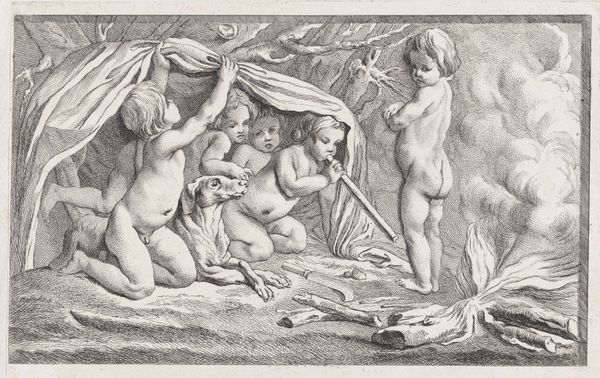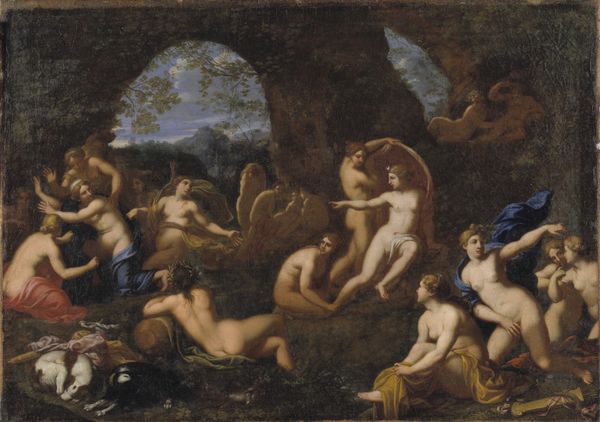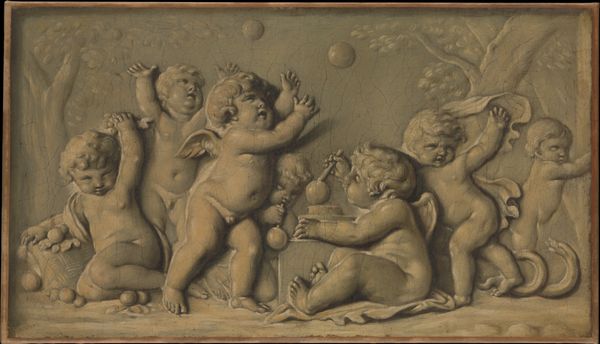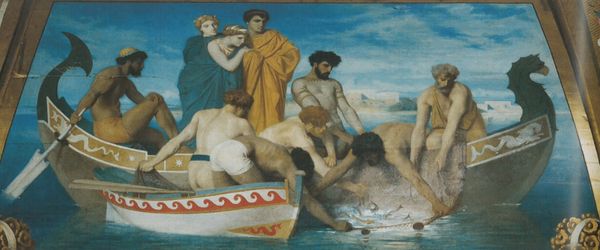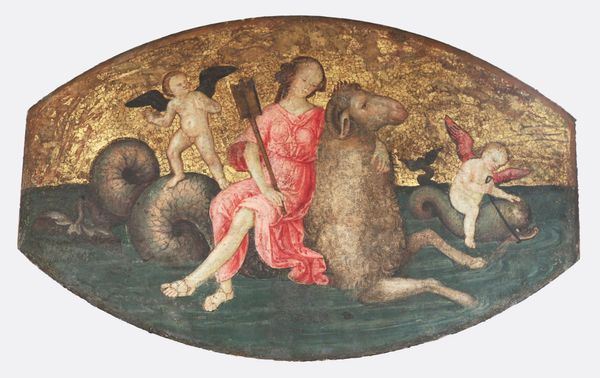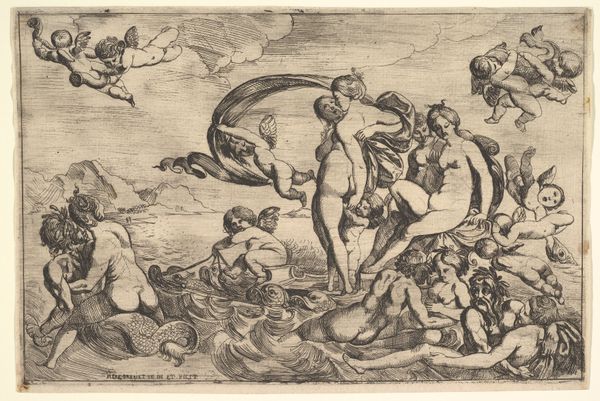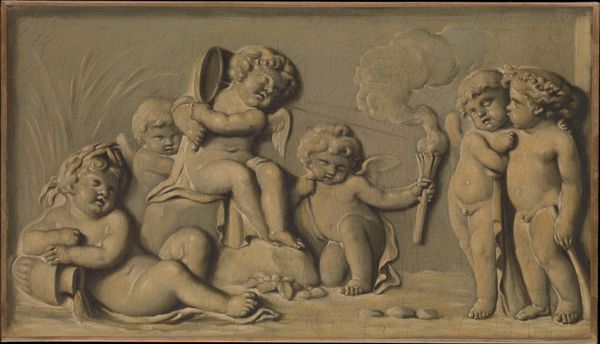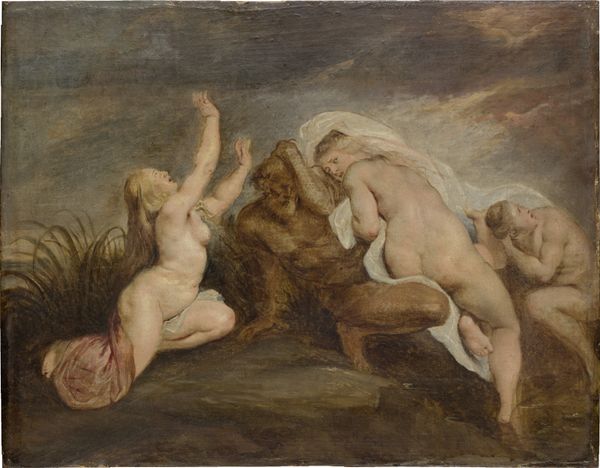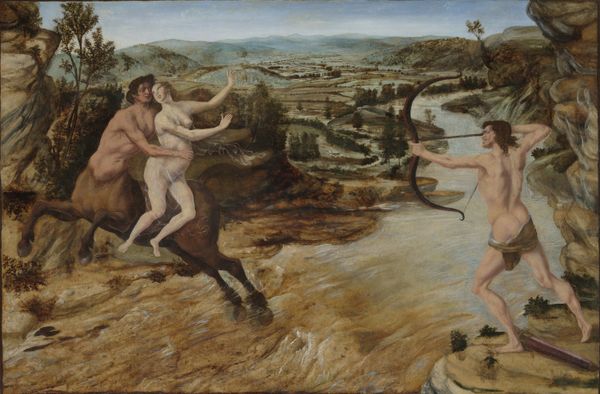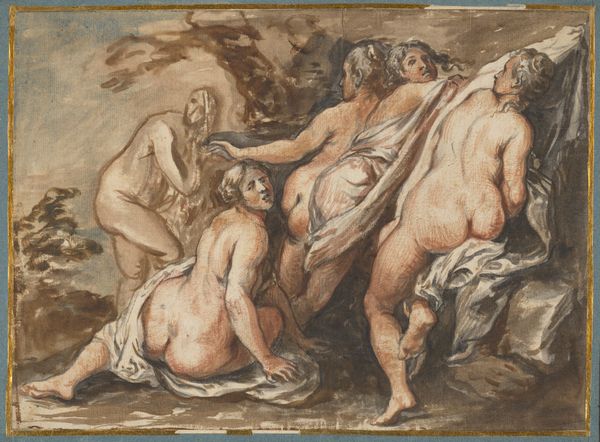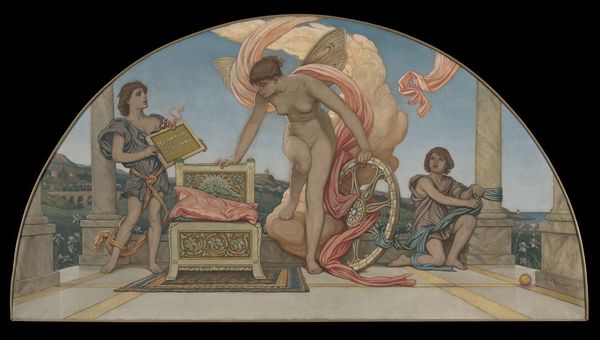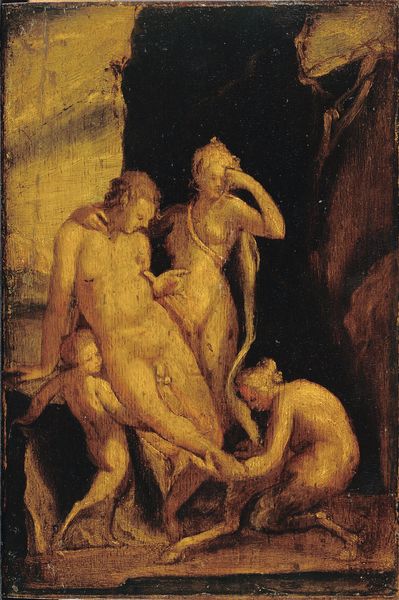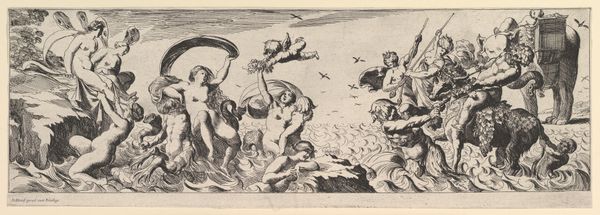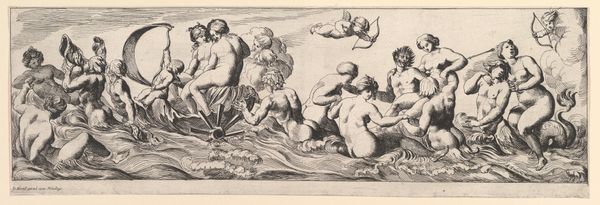
painting, oil-paint
#
painting
#
oil-paint
#
landscape
#
figuration
#
oil painting
#
mythology
#
human
#
history-painting
#
italian-renaissance
Copyright: Public domain
Piero di Cosimo painted this panel of Tritons and Nereids in Florence in the late 15th or early 16th century. The artist here draws on classical mythology to create a fantastical scene of revelry. We see male Tritons, sea gods that are half-man and half-fish, and female Nereids, sea nymphs, disporting themselves in a liminal space between land and sea. It is a bacchanal, a scene of unrestrained celebration associated with Bacchus, the Roman god of wine and fertility. The painting would have been commissioned to celebrate a marriage or a birth, designed for display in an elite Florentine household. In Renaissance Italy, knowledge of classical mythology was a signifier of high social status. The painting projects a fantasy of carefree sensuality, pleasure, and abundance associated with the upper classes. Art historians look at these images to understand the cultural values and the structures of power that operated in their own time. By studying archival sources, we can understand the social context in which it was made and the political function it was designed to serve.
Comments
No comments
Be the first to comment and join the conversation on the ultimate creative platform.
